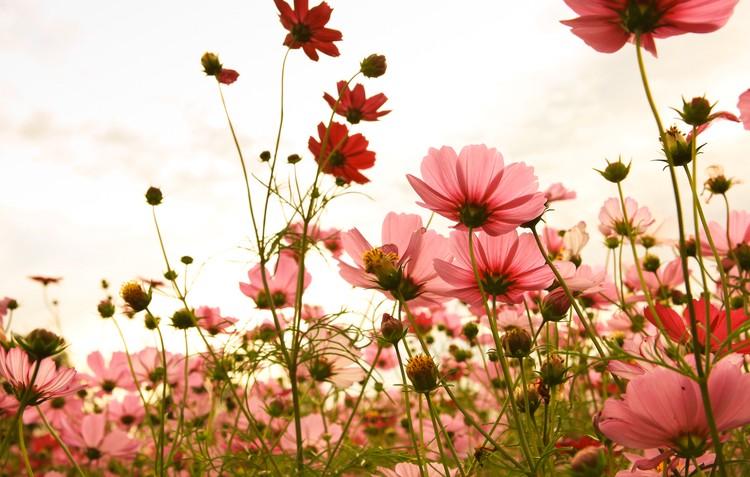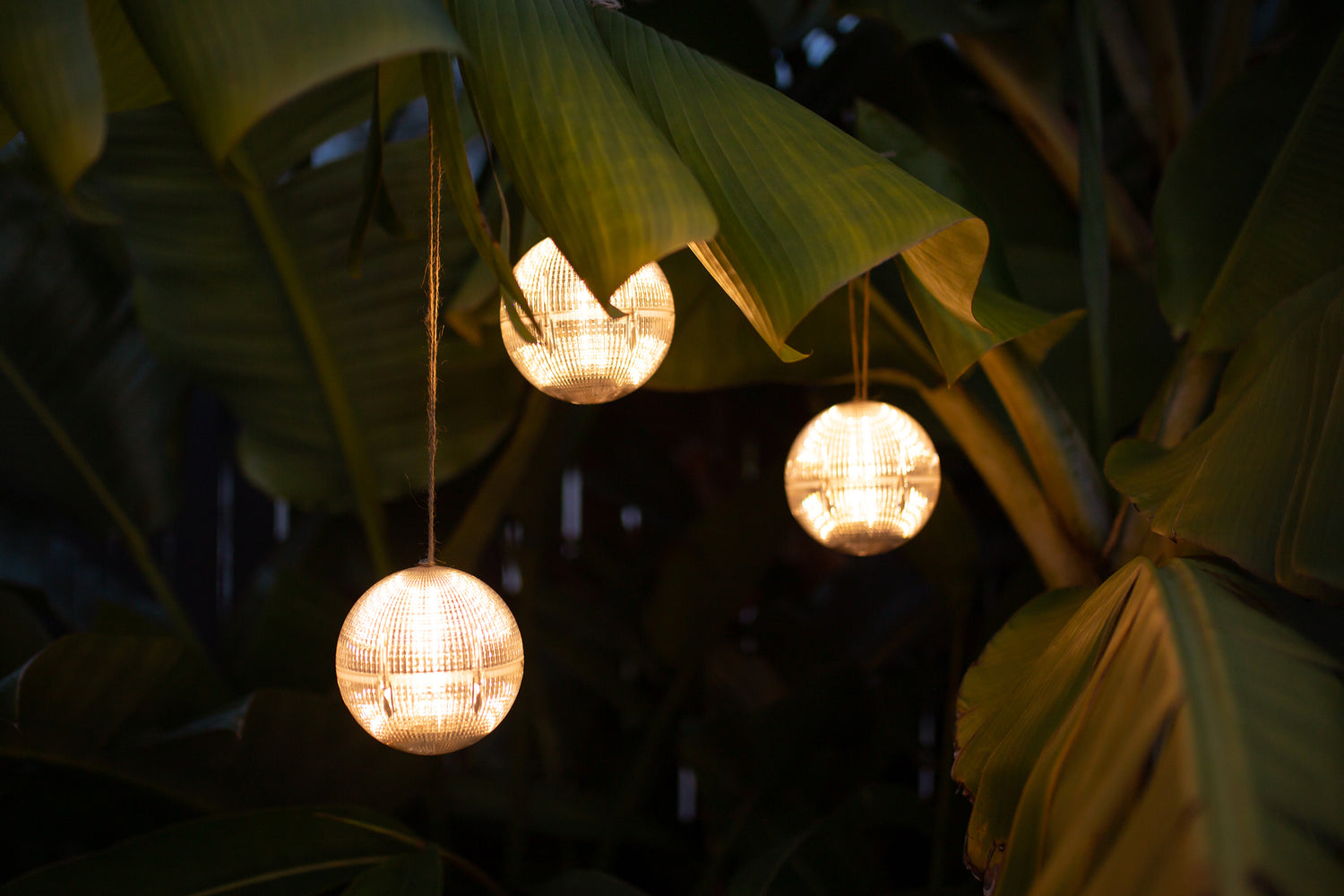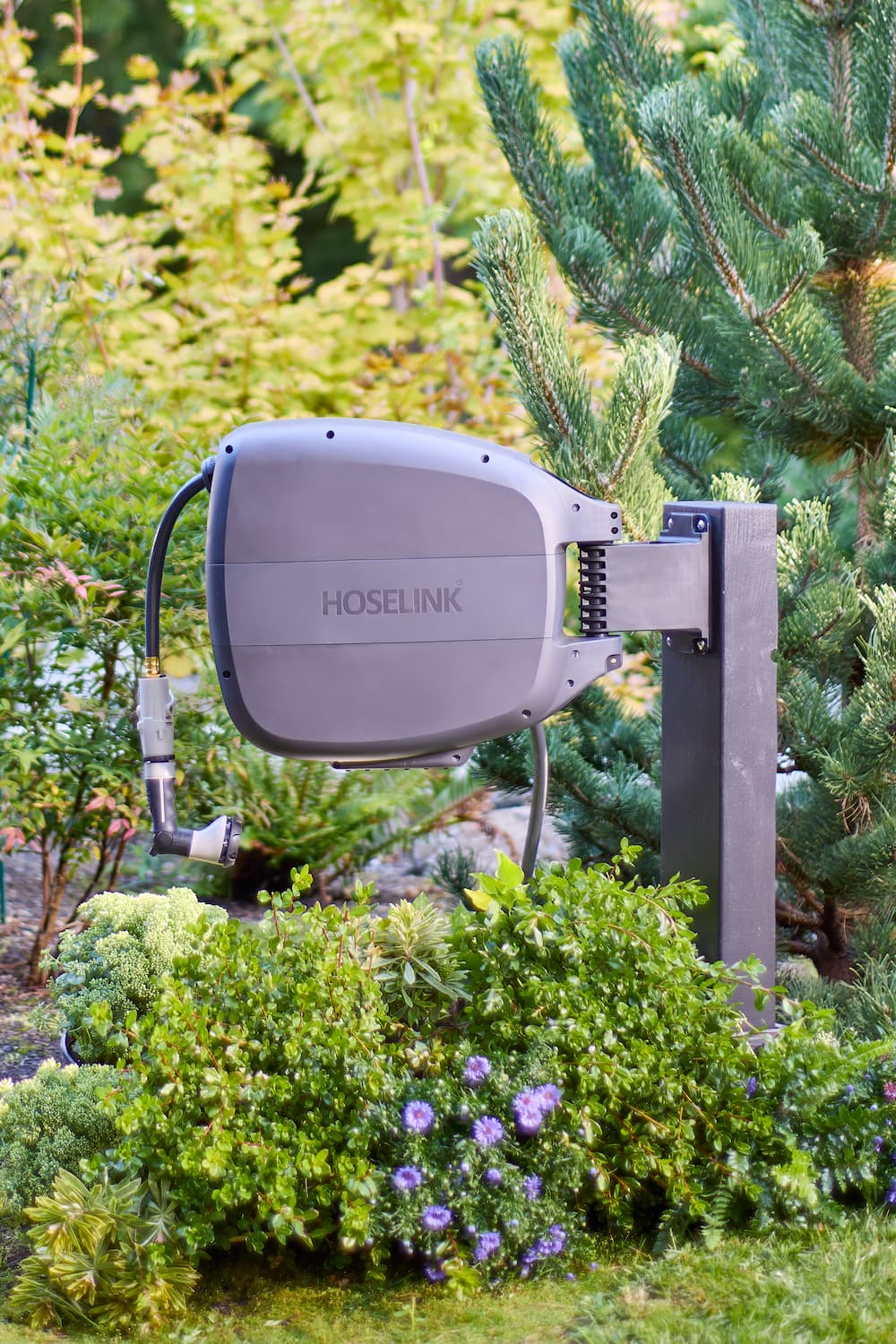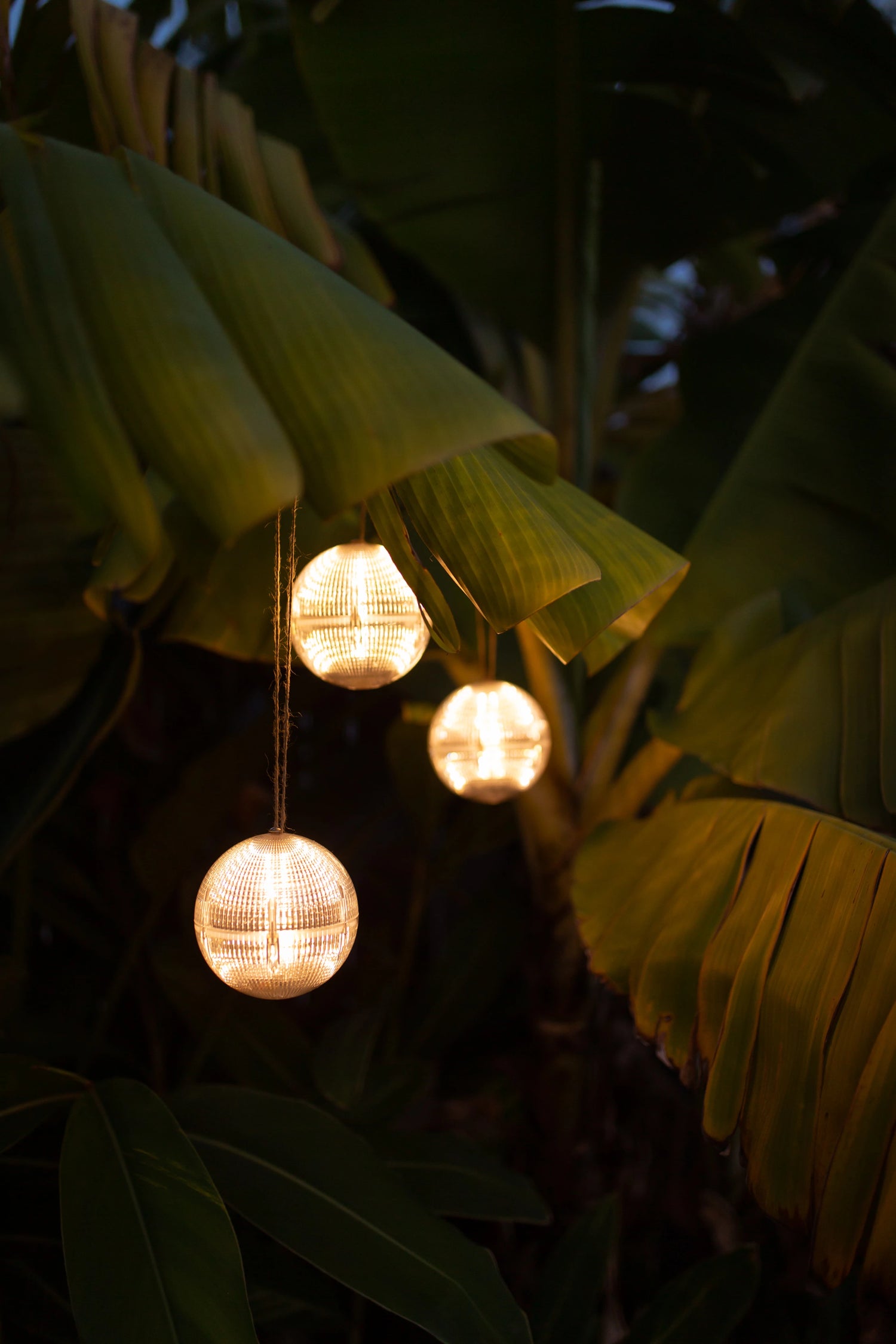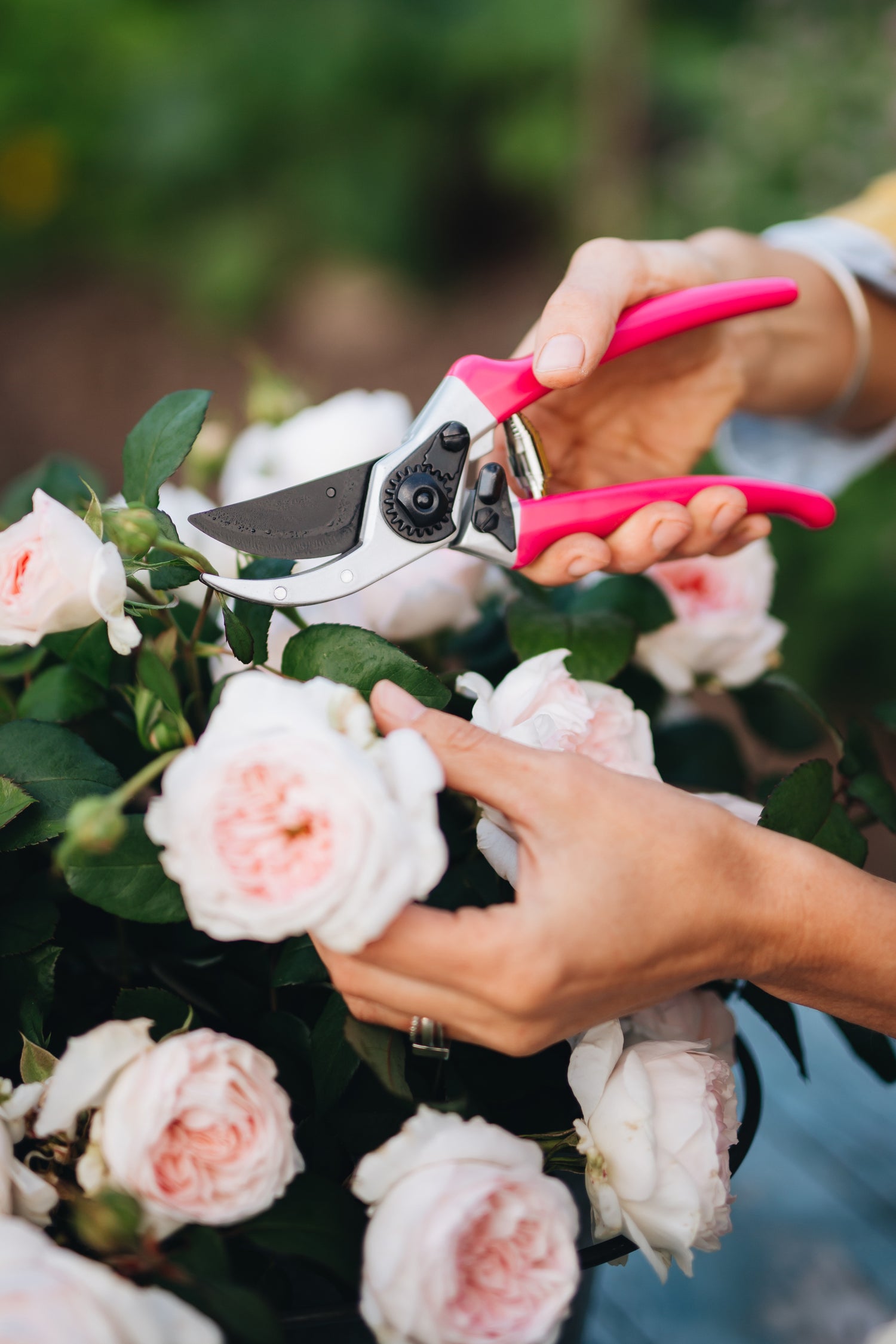Growing annuals from seed is easy to achieve and is significantly cheaper than purchasing your plants from the local nursery.
You’ll need some patience, as you won’t see many flowers for the first couple of months. However, the wait pales in comparison to that of planting perennials, which generally take two years to start blooming. The great thing about annuals is that once they arrive, they’ll bloom until frost starts to form the following year.
Many annual flower species host seeds with high germination rates and fast maturation, which means if you’re the type of gardener who likes to plan and prepare early, you can start the process indoors towards the end of winter, before transporting your seedlings outside to see results in early spring. Or, alternatively, wait until the spring sun emerges and plant directly in your garden soil. Either way, you’ll set yourself up for bucket loads of blooms across your garden landscape come summer. These annuals can vary in size, with taller plants for more spacious gardens, miniature flowers for container gardens and courtyards, and vines for a decorative touch.
Read on below to discover our top 10 annuals to grow in your garden this spring and summer!
Sweet alyssum
Few annuals can achieve the same heat and drought resistance of sweet alyssum, which has acclimatized to the United States but thrives in a variety of regions. As members of the mustard family, sweet alyssum flowers are notorious for their invigorating fragrance. Although they struggle to endure frost, sweet alyssum plants are self-sowing and can provide your garden with a rainbow of color in milder climates every season, year after year.
Sweet alyssum grows to between three and nine inches tall and serves as a great edging plant that provides a border structure between the features in your garden and as a bedding plant when used in bulk, providing deep color to your pots, hanging baskets, and garden beds. As their flowers often fade after a full season of summer sun, try trimming the plants back after their first bloom. This will not only keep them neat and tidy, but it will allow for a second cluster of flowers to follow.

Celosia
Celosia is a vibrant annual plant that produces feathery, fire-like plumes in various shades of red, yellow, and orange. As a result of their ability to tolerate dryness and heat, they require little maintenance once grown, and their unusual flame-like shape produces a colorful point of difference for any garden. The blooms of celosia are also quite strong and flexible, making them a convenient option for bouquets.
Although the seeds are small, they have a fast and frequent germination rate, with celosias even known to self-sow in suitable areas. Start the process indoors six to eight weeks before the last frost to have gorgeous blooms by mid to late spring.

Sunflowers
With striking blooms that peak from mid-summer to early fall, no flower has been recognized and represented as the symbol of summertime in the garden like sunflowers. Plus, 2021 has been designated the year of the sunflower… what more do you need to convince you to grow them?!
Sunflowers can come in shades of red, maroon, and orange, but most commonly appear in bright yellow with a dark brown center that matures into rounded bulbs filled with seeds. Sunflower seeds are best planted and grown directly in the ground outside as the seedlings can expand quite quickly. While you can grow sunflowers in a pot, they won’t be able to reach their full size, so consider a dwarf variety if this is the only option.
Sunflower varieties each have their own growth habits, with the species ranging from five to 10 feet, so ensure you grow the variety that’s best matched to your garden type and size.
Tip: Allow the flower heads to remain in place after they fade and wither to provide food for the wildlife that visits your garden.

Common nasturtium
There aren’t many things to dislike about nasturtiums. You can eat them, they cover up any unsightly spots in the garden, they have eye-catching foliage and dazzling flowers, and they’re low maintenance. At about the size of a smartie, nasturtium seeds can be handled and planted without fuss. The only thing you’ll need to be mindful of is to avoid transplanting them. Delicate in build, the process of transplanting can damage their fragile root system, so ideally, you’ll want to plant them in moist soil and in a position where they’ll receive a healthy dose of sunlight.
Nasturtiums are a complex group containing cultivars that originate from mixtures of different species, so be sure to carefully research the types of seeds you wish to grow.
Note: A cultivar is a plant variety that has been produced in cultivation by selective breeding.

Zinnias
Zinnias are one of the easiest flowers to grow. They have vibrant, daisy-like flowerheads that sit solitary on their own individual stems, which makes them a great contender for cut flower arrangements (think centerpiece on your dining table) or as food for pollinators.
Zinnias come in different shapes, too – referred to as beehive, button, or cactus varieties, and also range in height, with taller varieties being the best choice for the back of your garden bed, while shorter species are better placed along the border of your garden.
Zinnias germinate quite quickly and, when treated right, will be one of your top performers in the garden, but the key to igniting their growth lies in the condition they live in, namely warmer conditions. Unfortunately, fungus in your cool spring soil can make them wither, even in their early stages of growth. To combat this, plant them out in the garden when dusk temperatures average 60°F.

Morning glory
If you’re after a robust, fast-growing vine, morning glories are your best pick. These resilient climbers have stunningly shaped blooms that unfold in the sun and dreamy tendrils that give off an old-fashioned vibe.
Morning glories begin to bloom in early summer and last right through to the first frost in fall. With delicate stems and rounded leaves, their exotic flowers come in shades of pink, purple and white, emitting a fragrance loved by butterflies and birds alike.
Twirling morning glory vines over a trellis or archway or even using them as dense groundcover are great ways to make the most of the striking foliage. This drought-resistant plant can grow very quickly, reaching up to 10 feet in a single summer, with the ability to self-seed too. Considering their growth rate, you’ll want to make a sensible decision when choosing where to plant.

Marigolds
Marigolds are a reliable, uncomplicated annual that transport the color and feeling of summer sunshine straight to your garden, as well as attracting beneficial buzzers like bees, butterflies, ladybugs, and a variety of beetles. Try to give them full exposure to sunlight and well-drained soil, then watch them bloom all the way from spring through to fall.
Marigold seeds germinate within just a few days and take only two months to bloom. The relative ease and speed that comes with handling, planting, and growing marigolds make them a great entry point for first-time gardeners or to get kids involved in their first gardening project. They’re also a great comrade in the veggie garden serving as effective deterrents for pests and predators.

Cosmos
Cosmos flowers are similar to daisies, with small buds surrounding the center circle of florets in a thin cup-like shape. They come in a broad range of pastel and neon colors, with their leaves growing on opposing sides of each stem. The best part about cosmos is they don’t attract any unwanted visitors, meaning the plants look fresh all season long!
Cosmos are typically showcased in cottage garden settings and blend in with just about any array of flora you can pull together. For the best flowering show, choose a site that gets full sun. Cosmos can prosper in limited shade but will have fewer blooms and won’t be as dynamic in structure when planted in shadier parts of the garden.

Mexican sunflowers
The Mexican sunflower is one of the few annuals that leaps to head height and beyond as warmer weather approaches, without much maintenance required. They generate dozens of daisy-like blooms and even have rich nectar deposits in their blossoms to meet the needs of pollinators, which makes them a great addition to your veggie patch.
One small packet of Mexican sunflower seeds will give you multiple bouquets of cut flowers around summertime. Try planting them with companions that not only flourish in the same sun-filled locations, but aren’t fussy with soil either, like zinnias and cosmos, which will also perform as snip-and-grow flowers for the cutting garden.

Lantanas
Growing lantanas in the garden is a fantastic way to add a splash of color and visual interest to your garden. Known for their snowflake-shaped florets, lantanas aren’t too demanding; you’ll only need a sunny location and well-draining, slightly acidic soil. They can be grown in the garden, containers, or hanging baskets and are best planted in mid-spring when the cold weather and frost have completely come to a close.
While freshly planted lantanas require regular watering, once established, you’ll hardly have to check in on them as they’re quite tolerant of dry conditions. In fact, a good soaking about once a week should quench their thirst.


